Discover the top-performing banner ads size for your ads, optimize your advertising strategy with the most effective banner sizes, and ultimately maximize engagement and conversions.
What are Banner Ads?
Banner ads have emerged as a prevalent form of online display advertising. These visual components gracefully grace websites, seeking to captivate users and guide them toward desired actions. These kinds of ads have garnered immense popularity owing to their knack for effectively communicating messages, amplifying brand recognition, and driving conversions.
Secondly, banner ads offer a cost-effective advertising solution. Advertisers can define their budgets, target specific audiences, and closely monitor the performance of their campaigns. This level of control enables efficient allocation of resources and maximizes return on investment.
Lastly, banner ads provide extensive reach and precise targeting capabilities. They can be displayed across various websites spanning multiple industries, ensuring exposure to a wide and diverse audience. Moreover, advertisers can leverage advanced targeting options such as demographic filters, geographic preferences, and user interests to enhance the relevance and impact of their ads.
Publishers strategically utilize the high-traffic zones on their websites to showcase banner ads, commonly positioning them at the front, bottom, or side of a page. Advertisers acquire this advertising space either through ad networks or direct negotiations.
One pivotal aspect that profoundly influences the success of banner ads is their size. The size of a banner ad plays a critical role in determining its visibility, user engagement, and click-through rates.
Therefore, choosing the right size is essential to ensure that the ad effectively captures the attention of the target audience and seamlessly integrates into the webpage’s layout.
That being said, let’s find out the significance of banner ads and emphasize the criticality of choosing the appropriate sizes of banner ads to achieve optimal performance and success in our advertisement campaigns.
Publishers strategically utilize the high-traffic zones on their websites to showcase banner ads, commonly positioning them at the front, bottom, or side of a page. Advertisers acquire this advertising space either through ad networks or direct negotiations. But before we delve into the standard web banner sizes and top performing banner ads size, let’s discuss what display advertising is.
Also Read – What are In-Banner Video Ads and How to Get Started With Them?
What is Display Advertising?
Display advertising involves utilizing banner ads on a publisher’s webpage or social network platform. These ads can take the form of text, images, or videos, with the main objective being to encourage visitors to click on them, redirecting them to the advertiser’s page.
Typically, display ad campaigns are conducted through ad networks like the Google Display Network (GDN) or Facebook Audience Network. Ad networks play a crucial role in facilitating audience targeting capabilities and ensuring the appropriate selection of ad formats.
How does Banner Advertising Work?
Banner ads serve the dual purpose of informing visitors about brands, products, or services and enticing them to progress further in the purchasing process. Successful banner ads incorporate creative messaging, graphics, and a compelling call to action (CTA) designed to captivate visitors and spark interest in the advertiser’s offerings.
In the realm of conversions, retargeting plays a pivotal role, given that 96% of visitors do not convert during their initial visit. Banner ads prove effective not only in generating leads but also in the practical application of retargeting users.
Retargeting is executed through a cookie mechanism. When a visitor clicks on an ad and is directed to the advertiser’s page, a “pixel” is embedded on the visitor’s browser. This pixel tracks the user’s online activities, enabling advertisers to deliver highly personalized ads across the user’s primary online touchpoints.
Banner ads not only enable publishers to monetize their websites but also empower marketers to raise awareness of their products and services, ultimately contributing to increased sales.
Why is Banner Advertising Relevant for Publishers?
If you are a publisher with a substantial monthly visitor count, a highly effective strategy for monetizing your website involves incorporating banner ads.
To seize this opportunity, you can offer space on your web pages for business promotions by partnering with display ad networks. Here’s a step-by-step overview of the process:
- Sign up with a display network: Begin by registering with a display network. This network will serve as the bridge for integrating banner ads onto your website.
- Receive and implement a script: Once registered, the display network will furnish you with a script to embed on your website. This script is designed to seamlessly showcase banner ads, alleviating the need for manual intervention on your part.
- Automated display of banner ads: Implement the provided script, and your website will automatically display banner ads. This automated process allows you to concentrate on content creation without the hassle of managing ads manually.
- Compensation for clicks: Your earnings are tied to the number of clicks the ads on your website receive. For each click, you receive compensation, creating a straightforward and performance-driven monetization model.
By adopting this approach, you can effectively leverage your website’s content and traffic to generate revenue through banner ads. This symbiotic relationship between your content creation efforts and advertising partnerships enhances your ability to monetize your platform successfully.
Why is Banner Advertising Relevant for Advertisers?
For advertisers seeking to enhance brand visibility or elevate product and service sales, a strategic approach involves advertising on publisher sites that cater to specific niches or those with substantial traffic.
Regardless of the chosen avenue, the objective remains consistent: directing traffic to your site through the utilization of banner ads. Here’s a concise overview of this process:
- Sign up with a display ad network: Commence the process by enrolling with a display ad network. This network will serve as the conduit for integrating your banner ads into the chosen websites.
- Select the type of website for ad placement: Make a strategic decision regarding the type of website where you wish to display your ads. Whether niche-specific or high-traffic general sites, this choice is pivotal to reaching your target audience effectively.
- Automated placement on preferred websites: Once enrolled and preferences are set, the display ad network will automatically position your banner ads on the selected websites. This automated placement streamlines the process, allowing you to focus on achieving your advertising goals.
- Payment based on performance: Your payment structure is typically tied to either per-click or per-impression metrics. This means you pay based on the number of clicks your ads receive or the number of times they are displayed, providing a flexible and results-driven approach to advertising.
By following this approach, advertisers can strategically leverage banner ads to drive traffic to their websites, whether by targeting specific niches or tapping into high-traffic platforms, all while maintaining a performance-based payment system.
Why Is Banner Ads’ Size Important?
Banner ads are graphical advertisements displayed on websites, typically in the form of images or interactive multimedia elements.
They are designed to attract users’ attention and promote products, services, or messages. These ads are strategically placed within a website’s layout to maximize visibility and engagement.
Think of them as the visual storytellers of the online space. They captivate and engage users, sparking their curiosity and enticing them to take action.
Whether it’s making a purchase, signing up for a service, or simply learning more about a brand, banner ads are crucial in driving user engagement and generating business.
As already mentioned, banner ad size plays a critical role in its effectiveness. Different sizes impact user engagement, visibility, and click-through rates. Here are a few reasons why ad size matters:
Visibility
Larger banner ads size tend to attract more attention as they occupy more screen real estate. They are more likely to be noticed by users, increasing the likelihood of engagement and click-throughs.
Compatibility
With the diverse range of devices and screen sizes available today, choosing the right banner size ensures platform compatibility. Responsive design and adaptability are crucial to ensuring that your ads display properly on desktops, mobile devices, and tablets.
Ad Placement Opportunities
Websites have designated spaces for specific banner ad sizes. By selecting popular sizes, you can take advantage of prime ad placements and increase the visibility of your ads.
User Experience
Banner ads enhance the overall user experience by seamlessly blending into the website’s design. Ads that are too large or intrusive may disrupt the user’s browsing experience and lead to negative brand perceptions.
Common Banner Ad Sizes (most common banner ad sizes) for Publishers
When it comes to choosing the right ad sizes for your website, the many options available out there can feel overwhelming.
However, you can simplify the decision-making process by considering the preferences of advertisers who often favor specific web banner ad sizes. By narrowing down your choices to those preferred sizes, you can streamline the selection process.
Nevertheless, it is crucial to evaluate how the chosen ad size will affect your content and the overall user experience before making a final decision.
Here are some of the top-performing banner ads:
1. Leaderboard Banner Ads Size
Size in Pixels: 728×90
Leaderboard banner ads are quite popular and are usually positioned at the top of a webpage.
Advertisers find it favorable due to its generous space for showcasing their message, making it a highly impactful format for enhancing brand recognition.
Moreover, its greater viewability further enhances its value, allowing you to maximize its selling potential.
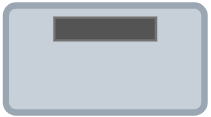
Leaderboard (728×90)
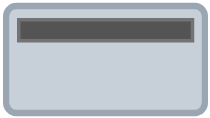
Large Leaderboard (970×90)

Mobile Leaderboard (320×50)
2. The Large Rectangle Size
Size in Pixels: 336×280
This particular size is frequently utilized for display ads, offering advertisers sufficient space to highlight their product or service.
It presents a favorable choice for publishers aiming to provide a well-rounded ad experience for their users and is commonly positioned in the middle or at the bottom of a webpage.
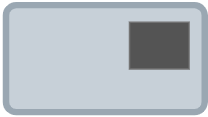
Large Rectangle (336×280)
3. The Medium Rectangle Size
Size in Pixels: 300×250
300×250 banner ads are commonly referred to as an “inline rectangle,” this particular size finds frequent usage in websites abundant with content.
It offers advertisers a compact yet effective space to showcase their message.
For publishers seeking to monetize their sites while maintaining an optimal user experience, this size proves to be a popular choice.
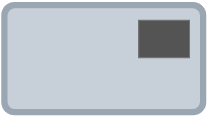
Medium Rectangle (300×250)
4. The Skyscraper Size
Size in Pixels: 120×600
This particular size is ideal for vertical ads and is commonly positioned along the side of a web page.
Its slender and elongated format enables seamless integration into tight areas while ensuring visibility for visitors.
It presents an excellent choice for publishers aiming to provide their users with a distinctive advertising experience.
5. The Wide Skyscraper Size
Size in Pixels: 160×600
This format is akin to the Skyscraper but with a broader layout. Often positioned on the side of a web page, it offers advertisers a neat and straightforward structure to showcase their message.
It proves perfect for presenting sizable images and more intricate text, all while maintaining a compact size to accommodate smaller spaces.
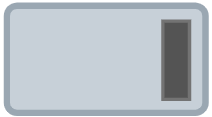
Wide Skyscraper (160×600)
6. The Large Skyscraper Size
Size in Pixels: 300×600
Often referred to as a ‘half-page ad,’ this particular size presents a distinctive and compelling avenue for displaying advertisements.
It grants advertisers a generous area to showcase their message while adhering to a vertical format.
This format proves particularly fitting for websites abundant in vertical space, enabling publishers to monetize their sites without compromising the user experience.
7. 300×250 Medium
Size in Pixels: 300 x 250
Another commonly used size is the medium rectangle, measuring 300×250 pixels. This versatile square or rectangular ad format fits well within content areas and can be placed within articles, sidebars, or in-between paragraphs.
8. Square Size Ads
Size in Pixels: 250×250 pixels
The square size, measuring 250×250 pixels, provides a compact format that can be placed within sidebars, widget areas, or embedded within the content. Its balance between visibility and unobtrusiveness makes it a popular choice.
These are just a few examples of popular banner ad sizes, and the choice of size depends on factors such as ad placement opportunities, the target audience, and more.
Selecting the right size for your banner ads can help you optimize their visibility, engagement, and overall impact on your advertising strategy.

Square (250×250)
Popular Banner Ad Size for Advertisers
Here are the standard web banner sizes for advertisers:
Google Banner Ads Sizes: Standard Banner Sizes
| Small Square Banner Ad – 200 x 200 | |
| Large Rectangle Banner Ad – 336 x 280 | |
| Google Square Ad – 250 x 250 | |
| Leaderboard Banner Ad – 728 x 90 | |
| Inline Rectangle Banner Ad – 300 x 250 | |
| Skyscraper Banner Ad – 120 x 600 | |
| Wide Skyscraper Banner Ad Size– 160 x 600 | |
| Half-Page Banner Ad – 300 x 600 | |
| Large Leaderboard Banner Ad – 970 x 90 |
Instagram Banner Ad Sizes
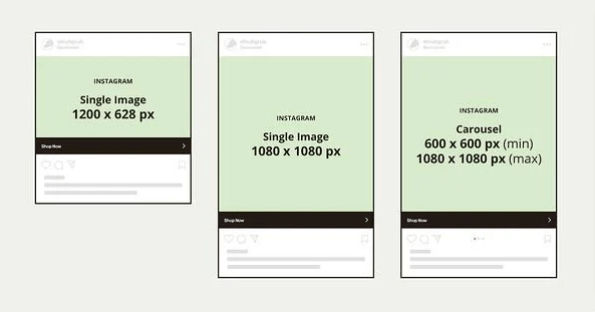
| Single Image Banner Ads – 400 x 500 | |
| Instagram Video Banner Ads – 400×500 | |
| Instagram Carousel Banner Ads Size – 1080 x 1080 | |
| Instagram Stories Carousel Ads – 1080×1920 | |
| Instgram Slideshow Banner Ads – 600 x 600 | |
| Instagram Stories Image Ads – 1080 x 1920 | |
| Instagram Stories Video Ads – 1080 x 1920 | |
Facebook Banner Ads Sizes
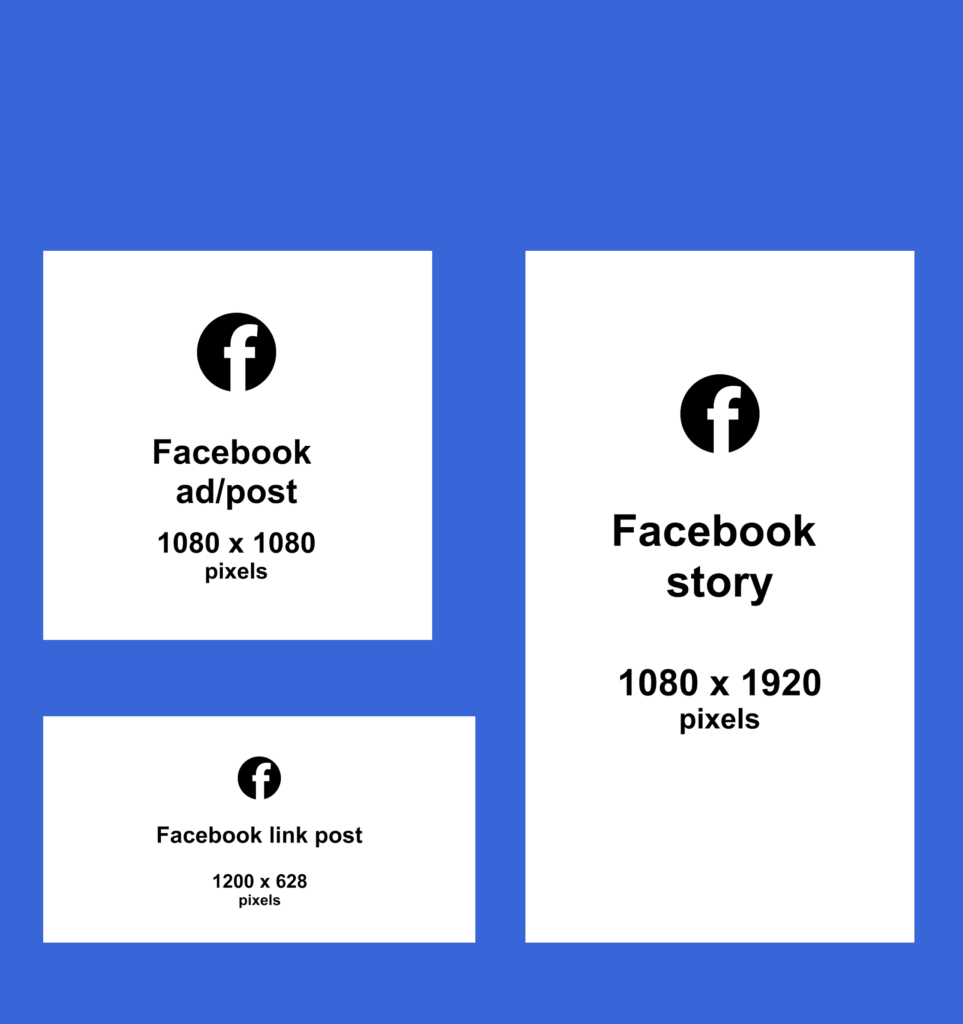
| Facebook Carousel Banner Ads – 1080 x 1080 | |
| Facebook Marketplace Banner Ads – 1200 x 628 | |
| Facebook Instant Articles Ads – 1200 x 628 | |
| Facebook Stories Banner Ads – 1080 x 1920 | |
| Facebook Collection Ads – 600 x 600 | |
| Facebook Feed Image Ads – 1200 x 628 | |
| Facebook Feed Video Ads – 600 x 315 | |
| Facebook Right Column Ads – 1200 x 628 | |
Also Check: Best Mobile Ad Sizes & Formats For Increased Viewability
Top Performing Banner Ad Sizes in 2024 (top banner ad sizes)
Some of the top performing banner ad sizes that dominated 2023, and expected to remain in trend in 2024 are –
1. Mobile Leaderboard – 320 x 50
Given that the majority of people now access the internet through their mobile devices, it’s no surprise that mobile ad banners are among the top-performing ad formats. The 320 x 50 size stands out as one of the most popular choices for mobile banner ads, widely utilized by advertisers on both mobile browsers and apps.
Incorporating various types of mobile banner ads, including mobile leaderboard banners, into your advertising strategy can significantly enhance your reach. Mobile leaderboards are positioned at the bottom of the screen, appearing on both apps and web pages, offering a strategic placement to capture user attention and maximize the effectiveness of your advertising efforts.
2. Medium Rectangle – 300 x 250
The 300 x 250 banner size (medium rectangle ad size) emerges as a versatile banner size, effectively catering to both mobile and desktop platforms. Widely adopted, it serves the purposes of mobile banner ads as well as desktop banner ads.
Medium rectangle ads demonstrate optimal performance when seamlessly integrated with text content. Their versatility extends to accommodating various ad formats, including text ads, image ads, or video ads.
When applied to mobile web pages, a medium rectangle banner ad serves a dual function. It acts as a visual break in lengthy content, offering users a respite as they scroll down. Furthermore, it proves valuable as a below-the-fold placement for mobile ads on devices.
Due to its size and adaptability to diverse ad formats, the medium rectangle is occasionally deemed intrusive to native content. Nevertheless, well-designed and strategically placed medium rectangle banner ads have the potential to complement the web page, delivering mutual benefits to both advertisers and publishers.
Given the considerations outlined above, it is imperative for marketers to adhere closely to specific guidelines for medium rectangle ad units within the Google Display Network (GDN). Adhering to these guidelines ensures that the integration of medium rectangle ads aligns with best practices, maximizing the effectiveness of the advertising strategy.
3. Leaderboard – 728 x 90
A leaderboard or horizontal banner ranks among the most commonly used banner ad sizes on desktop web pages, typically positioned above the main content and occasionally between articles.
While the 728 × 90 leaderboard can also be placed at the bottom of a page, most marketers contend that its optimal performance is achieved when situated above the fold. This preference stems from the observation that many visitors tend not to scroll all the way to the bottom of a page. Even if they do, the likelihood of engagement diminishes, as the content has already been consumed, and users are more inclined to navigate elsewhere.
For smaller publishers, adhering to the 728 x 90 leaderboard size is a prudent choice, particularly until there is a substantial improvement in audience reach. This approach aligns with a strategic progression, allowing smaller publishers to establish their online presence effectively.
4. Wide Skyscraper – 160 x 600
The 160 x 600 skyscraper size stands out as the most popular among skyscraper banners and is a favored choice for placing banner advertisements. The wide skyscraper ad excels in handling interactive content. Its appeal lies not only in capturing the user’s attention but also in seamlessly complementing content-rich sites with its visual lightness.
The optimal placement for a wide skyscraper is within a website’s right and left sidebars. Given its size, which almost covers a full page vertically, users can easily notice it and engage with the content.
How to Design the Best Banner Ads in 2024?
The primary goal of a banner ad is to persuade users to engage, making visibility and attractiveness critical elements. While choosing the correct size enhances visibility, the effectiveness of an ad hinges on its persuasiveness.
Design is pivotal in making an ad attractive, and one doesn’t necessarily need to be an expert designer to create compelling banner ads. However, a solid understanding of design principles is beneficial. Additionally, marketing knowledge is crucial for assembling materials and crafting a compelling message for potential customers.
Here are some essential design tips for banner ads in 2023:
1. Analyze Your Customers and Create Compelling CTAs
One of the most important elements of banner ads, like every other ad, is messaging. As an advertiser, you know who your target customers are and who you want your ads to engage with. However, if you dive deeper into your customers’ behavior and understand their emotions and pain points, you can figure out what CTA makes them want to click your ad.
Once a user notices the ad and is attracted by its design, it’s up to the CTA to persuade them to take the next step. It’s always best to understand your buyer persona and what promise they will engage with. This is essential to creating the “perfect” CTA.
2. Ensure to Have a Clutter-Free Design and Messaging
Banner ads share similarities with digital billboards, as users have a brief time window to notice them. Visitors typically come to a page for its content, emphasizing the importance of delivering a clear and understandable message through banners. In this context, cluttered designs are likely to be ineffective.
The key to conveying a clear message is to prioritize a clean design. Strive to include minimal text and a restrained number of images in your banner ads. By doing so, you increase the likelihood of capturing users’ attention within the limited timeframe, enhancing the overall effectiveness of your advertising efforts.
3. Map Different Ad Formats
Display ads offer extensive support for various ad formats, and selecting the right format is crucial for effectively showcasing your product or service. For instance, if you’re a fashion brand aiming to highlight your best works, opting for a video or GIF format may be most impactful.
When implementing dynamic ads, careful consideration of their placement and timing is essential. Ensuring that users encounter the ad at the right moment is critical, as you wouldn’t want them to notice the ad when it’s only partially played. Strategic placement and timing contribute significantly to the overall success of dynamic ads, enhancing their ability to capture and retain the audience’s attention.
4. Test on All Devices
Users may encounter your ad on various devices, so it’s essential to consider the adaptability of your banner ad design. If you’re exclusively focusing on designing your banner ad for desktop pages, it’s crucial to reconsider your approach.
Fortunately, many common banner sizes are compatible with both desktop and mobile web versions. However, ensuring optimal placement on all devices is key. Additionally, in some cases, you might need to make specific design adjustments to ensure the ad looks and functions effectively across different devices. Taking this cross-device approach ensures that your banner ads maintain their impact and accessibility, regardless of the device on which users encounter them.
Popular Industry Trends for Banner Ads
The advertising industry is constantly evolving, and staying current with the latest trends and advancements is important. Some notable industry trends related to banner ad sizes include:
Video Banner Ads
With the increasing use of mobile devices, optimizing banner ad sizes for mobile platforms is crucial. Focus on sizes that align with responsive design principles and prioritize mobile-first approaches.
Interactive Elements
Incorporating interactive elements within banner ads, such as animations or mini-games, can boost engagement and improve user interactions.
Native Advertising
Native ads seamlessly blend into the website’s content, offering a more organic and non-disruptive user experience. Explore native ad formats and sizes that integrate well within the context of the webpage.
The Bottom Line
Display advertising remains one of the most effective and efficient methods to establish a connection between your brand and online audiences. Whether you’re a publisher aiming to monetize your website or an advertiser strategizing to market your brand, display advertising presents a compelling option.
However, there has been a significant shift in online user behavior over the past few years. While banner ads continue to be relevant, the online user base is now dispersed across various devices. Furthermore, newer ad formats, such as video ads and animated banners, are often perceived as more effective than traditional static banner ads. This evolution in user behavior underscores the importance of adapting advertising strategies to align with changing preferences and technologies in the online landscape.
Choosing the perfect banner ad dimensions is vital to maximize impact.
Recognizing the significance of sizes, adhering to the best practices, and keeping up with industry trends can help you foster engagement and drive higher revenue.
Keep in mind that every advertising campaign is distinctive, and it’s crucial to assess the target audience, goals, and performance metrics to ascertain the most appropriate web banner ad sizes for your specific requirements.
FAQs
Banner ad sizes matter because they impact the visibility, engagement, and overall effectiveness of the ads. Choosing the right size ensures optimal display on different devices and maximizes the chances of capturing users’ attention.
The top-performing banner sizes vary depending on the specific campaign, target audience, and ad placement. However, some popular sizes include the leaderboard (728×90 pixels), medium rectangle (300×250 pixels), Skyscraper (160×600 pixels or 120×600 pixels), and square (250×250 pixels).
When selecting a banner size, consider factors such as ad placement opportunities, target audience demographics, campaign goals, and user experience. It’s also helpful to analyze industry research and performance data to determine which sizes have been successful for similar campaigns.
Yes, using multiple banner sizes can be beneficial as it allows you to target different placements and reach a wider audience. However, ensure that each size is optimized for its specific placement and maintains consistency in branding and messaging.
To optimize the design of your banner ads, ensure that they are visually appealing, have clear messaging, and include a strong call-to-action. Additionally, consider responsive design principles to ensure adaptability across various screen sizes and devices.
You can measure the effectiveness of your banner ads by tracking key performance metrics such as click-through rates, conversions, engagement, and return on investment. Utilize analytics tools and A/B testing to gather data and optimize your campaigns.
When selecting banner sizes for different devices, consider the screen dimensions and user behavior associated with each device. Prioritize responsive design and choose sizes that adapt well to desktops, smartphones, and tablets, ensuring a seamless and engaging user experience.
Common banner ad sizes include 468 x 60 (banner), 728 x 90 (leaderboard banner), 250 x 250 (square) and 120 x 600 (skyscraper). The standard banner ad for mobile is 320 x 50 (mobile leaderboard).
A 160 x 600 banner ad is not a great option on mobile devices because of their limited width. Instead, you can consider the 320 x 50 (the mobile leaderboard ad) size as it’s among the top-performing mobile banner ads.

Deepak has a keen eye for detail and a deep understanding of the ad tech landscape. Whether it’s through in-depth articles, thought-provoking insights, or compelling storytelling, he’s dedicated to helping people navigate the complex world of ad tech with the simplicity of his words.
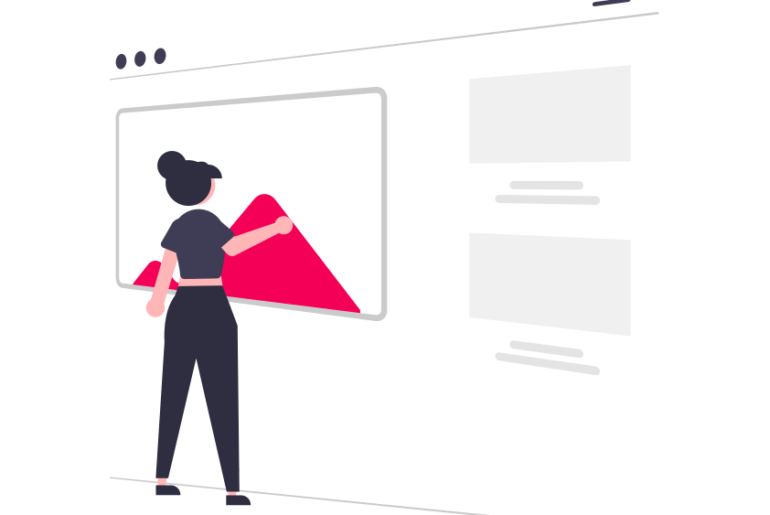



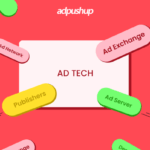
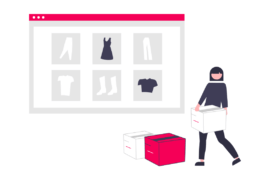
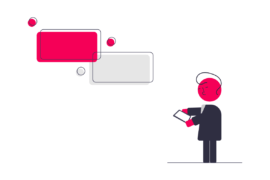
![28 Best Supply Side Platforms (SSP) for Publishers in 2024 [The Complete List] Supply Side Platforms](https://www.adpushup.com/blog/wp-content/uploads/2022/05/undraw_chore_list_re_2lq8-270x180.png)

